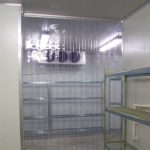Why Freezer and Coolroom Parts Matter?
- 31 May 2016
Most businesses can forgive temporary service interruptions. Production lines get a chance to rest and the equipment cools down. Everything is put on pause. Conversely, a system disruption that affects a temperature-controlled environment is bound to cause alarm.
Protecting Perishable Commodities
Freezer and coolroom scenarios are designed to maintain a chilly climate around the clock, but the system is only as good as the sum of its parts, which means that any weak link could be enough to cost a business everything. Once humbled, the equipment is just an insulated room, a sealed space where food will spoil and sensitive pharmaceutical compounds will chemically corrupt. In short, the mechanical parts that sustain a frosty environment must be built from high-quality materials so that the equipment remains reliably functional.
No Room for Substandard Parts
If food and produce, medical materials and pharmaceutical products are to be stored properly, the freezer and coolroom storage spaces we’ve described so far must comply with a rigorous set of health and safety guidelines. Similarly, every section of the storage area, every seal and insulating wall panel, has to be designed with a solid bias towards quality and constancy. And, on remembering the weakest link principle, that same design ethic necessarily extends to cover every structural component, all the way down to the humblest fastener and vent screw.
Active System Components
Even as top-notch insulating components and structural parts keep the chilled atmosphere constrained, the active machinery works to efficiently pull air in and quickly drop the temperature. The fan belts on a two-stage cooling unit are often seen as a chink in the cooling armour here, but engineers design their drive belts to work flawlessly in the cold by manufacturing the belts from engineering plastics, polymers that won’t crack or rupture when the temperature falls below freezing point. It’s the same with the bearing housings and the metals used in the refrigerant coils, with newer alloys eliminating corrosion and maximising cross-sectional area coverage to deliver fully optimised cooling power.
Storage rooms and cabinets that exhibit accurate climate controlling abilities are designed to do a handful of tasks, but this design always highlights one feature. The reliability factor is what’s being referred to now, a feature that has to work reliably when the temperature is low or airborne moisture content is high. Built from the best materials and tested to the point of destruction, these parts matter because they must maintain the freezer and coolroom storage temperatures at all times.
Mark Connelly
C&M Coolroom Services
E-mail : markconnelly@cmcoolrooms.com.au
Mobile: 0412 536 315


